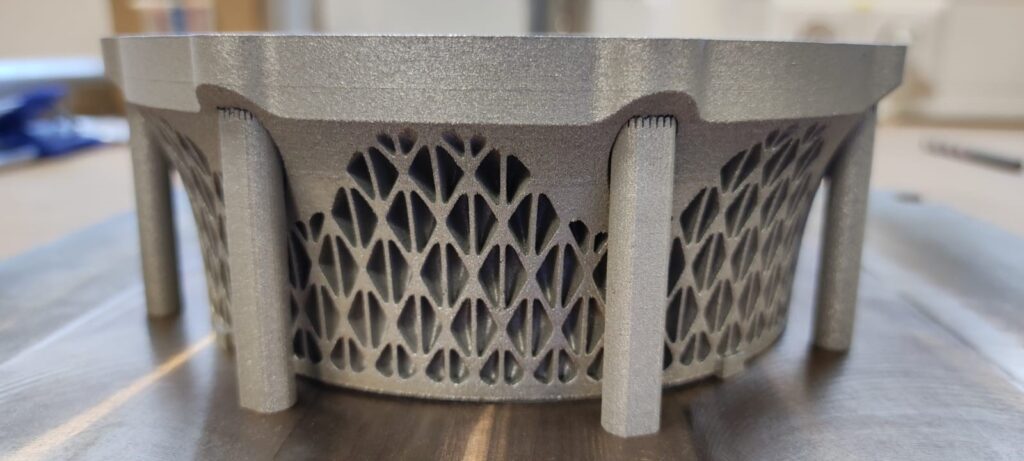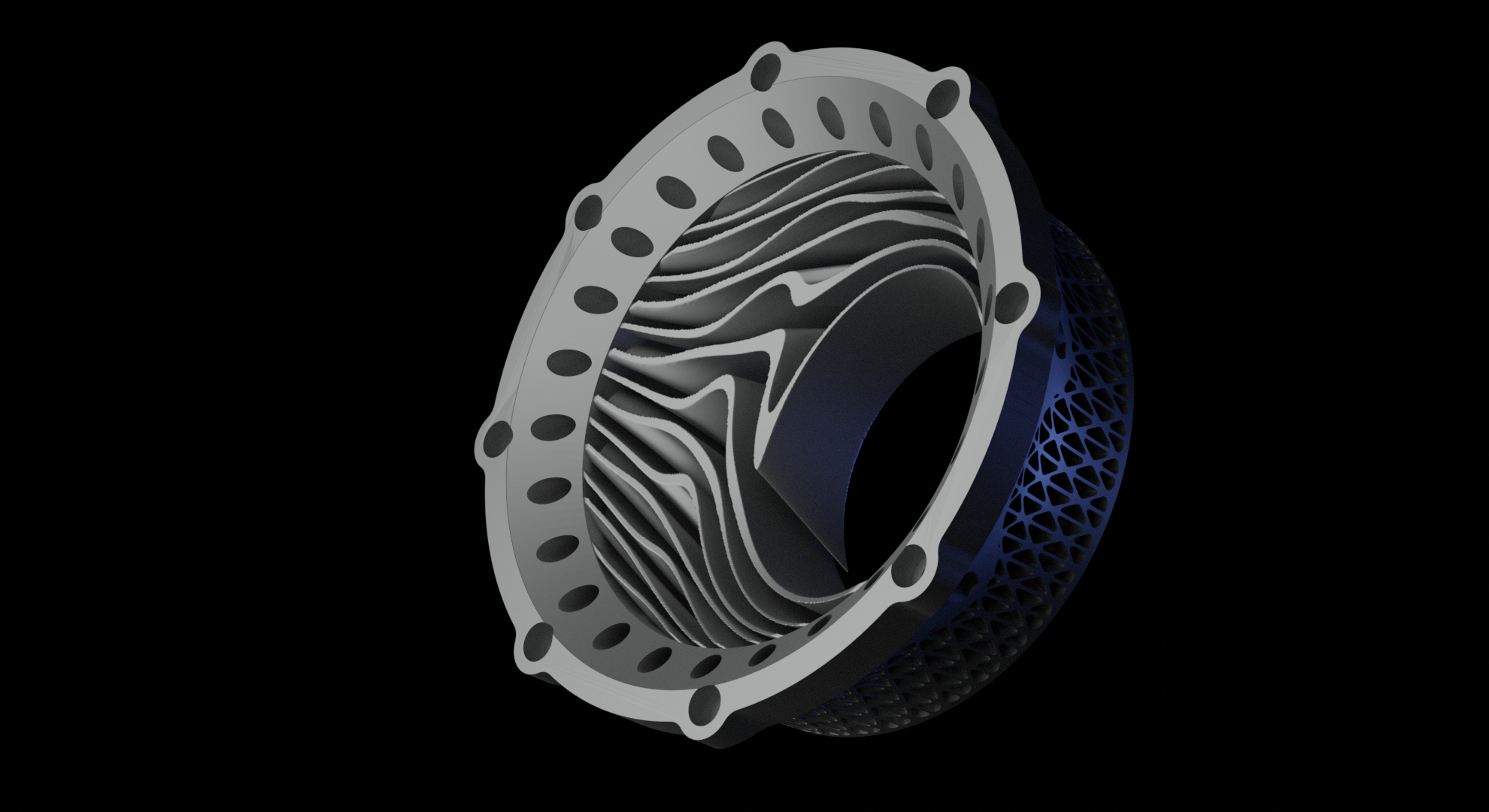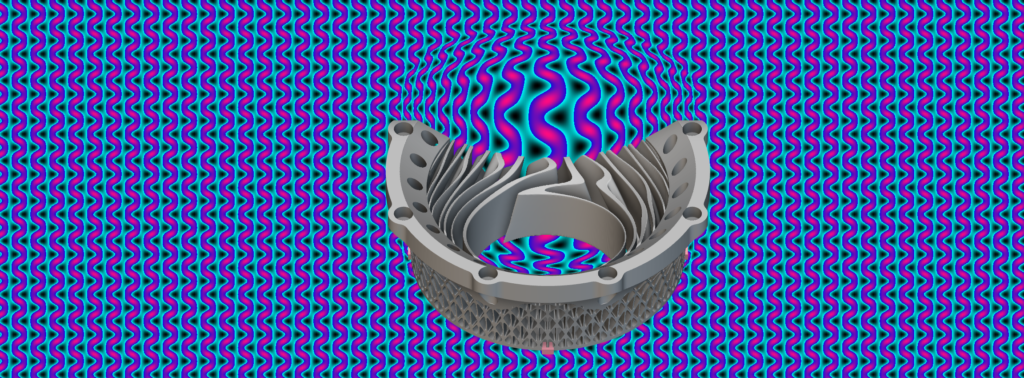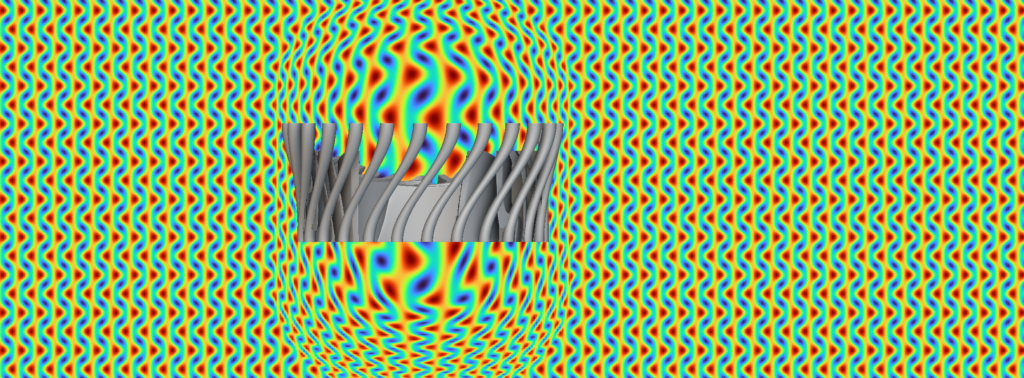3D printed valve
complexity of design elements
The complex geometries available with additive manufacturing are undoubtedly one of the most attractive factors when looking to introduce 3D printing into any manufacturing workflow, but the reality is that most available non-destructive testing solutions simply cannot provide testing sufficiently detailed for parts intended for use in critical applications. With Theta’s nonlinear resonance NDT method becoming a topic of discussion in the additive manufacturing community, the folks at 3dpbm spotted the perfect opportunity to put the credentials of the RD1-TT to the test and began a collaborative project between Theta Technologies and the 3D design specialists of Puntozero.
Project objectives
- Bringing AM into production
- Carry out repeatable tests at scale
- Making AM reliable

pROBLEM
The issue addressed in the project is the limited adoption of metal additive manufacturing for end-user parts, especially in critical applications, due to the restrictions of current NDT (Non-Destructive Testing) solutions. Available non-destructive testing solutions do not provide sufficiently detailed testing to ensure the safe use of these parts in critical contexts.
solution
The proposed solution is RD1-TT, a new NDT technology developed by Theta. This technology was specifically designed to overcome existing limitations and give 3D printing designers the ability to fully demonstrate the capabilities of these complex parts. The RD1-TT is capable of more detailed testing, allowing for more accurate evaluation of metal 3D printed parts, making them more suitable for critical applications.
development
Il progetto ha coinvolto una collaborazione tra Theta Technologies e Puntozero, specialisti di progettazione 3D. L’iniziativa ha incluso la messa alla prova delle credenziali di RD1-TT attraverso test e valutazioni dettagliate, con l’obiettivo di dimostrarne l’efficacia nel superare le limitazioni precedentemente riscontrate nella fabbricazione additiva di metallo per applicazioni critiche.

Intro
In recent years, it hasn’t been easy to use metal 3D printing to make important parts that people use, especially in critical situations.
This is because current solutions for testing these parts are not good enough.
Now there’s a solution called RD1-TT, a new testing technology that Theta created specifically.
This technology is designed to help designers and planners by giving them the chance to demonstrate the true capabilities of what they create.

The project
Puntozero has teamed up with metal powder manufacturer m4p to test Theta’s nonlinear resonance technology on 3D printed valves. The valves, designed by Puntozero and printed with m4p technology, had complex characteristics. The successful test would confirm the effectiveness of Theta’s technology in testing complex 3D printed components and validate m4p’s detailed attention to metal powder production, particularly in choosing suitable materials such as Superduplex alloy.
The development
The valves, designed by Puntozero and subjected to non-destructive testing, were printed using m4p’s internal printers and feature multiple complex design features, an aspect which does not influence the non-linear resonance test.
Choosing the appropriate material for 3D printed parts is a key factor in the overall success of a component. Bastian Kallenbach, development engineer at m4p, understands the importance of learning every detail of each part and understanding its intended use to select the most suitable material. “Due to the specific requirements for fluid conveying materials, the highly corrosion-resistant Superduplex alloy m4p™ Type10-SDX was selected as a suitable enabler. Its characteristic profile also corresponds to a reasonable level of wear resistance, as well to an adaptable processability, which allows you to control geometries subject to residual stress and then print them in a reliable and reproducible way.”
A successful test of the 3D printed valves would not only confirm Theta’s credentials in the non-destructive testing of complex 3D printed components, but would also validate m4p’s meticulous attention to metal powder production.

Unlock the potential of AM


This makes the RD1-TT the perfect solution for implementation as a rapid triage technique or for those looking to use additive manufacturing for mass production. A nonlinear resonance test is performed by exciting a component to generate a linear response.
The overall testing process validates what Theta Technologies has always believed, that increasingly complex 3D printed metal parts can now be subjected to a rapid and, most importantly, accurate non-destructive testing process. When used in a manufacturing environment, the RD1-TT can be employed to test 3D printed metal components immediately after printing. This gives manufacturers an instant understanding of the integrity of a part, which, if defective, can be removed from the workflow before adding unnecessary value through additional steps such as post-machining.
The design limitations of 3D printed metals that were effectively imposed on designers due to the lack of effective non-destructive testing methods capable of handling complex parts look set to become a problem of the past.
This will be welcome news for additive manufacturing designers and manufacturers looking to push the boundaries of design and adopt metal 3D printing as a real option for mass production.
